A 1KW On-Grid Solar System is a renewable energy solution that allows homeowners or small businesses to generate electricity using solar panels. It consists of various components, including solar panels, an inverter, and necessary mounting and wiring equipment. The “1KW” refers to the system’s capacity to produce up to 1 kilowatt of electricity under optimal sunlight conditions.
The On-Grid solar system is connected to local electricity grid. This connection allows users to draw power from the grid when their solar panels are not producing enough electricity, such as during nighttime or cloudy days. Conversely, when the solar system generates more electricity than needed, the excess can be fed back into the grid.
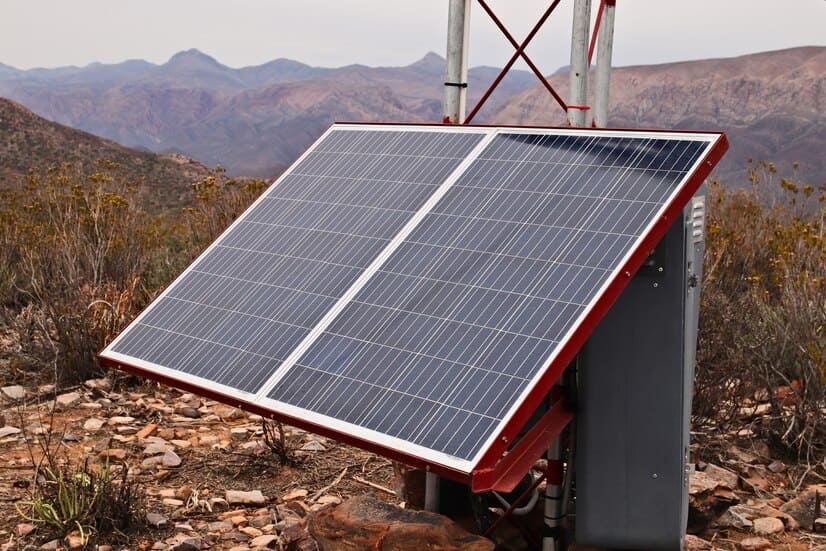
Components of 1KW On-Grid Solar System
A 1KW On-Grid Solar System is designed to generate electricity and feed it directly into the grid. This type of system is ideal for locations with reliable grid infrastructure, as it helps reduce electricity bills by supplying power generated from solar panels. Here are the key components of a 1KW on-grid solar system:
The primary component, solar panels are responsible for converting sunlight into electrical energy. For a 1KW system, you typically need 2 panels, depending on the wattage of each panel, e.g., 540W or 580W panels.
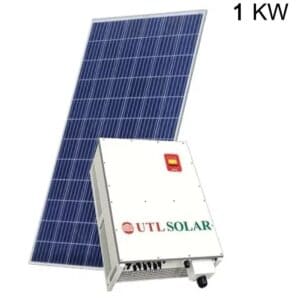
This device converts the direct current (DC) generated by the solar panels into alternating current (AC), which is compatible with the grid and can be used in household or commercial electrical systems. The inverter also ensures that the energy fed into the grid is synchronized with the grid’s voltage and frequency.
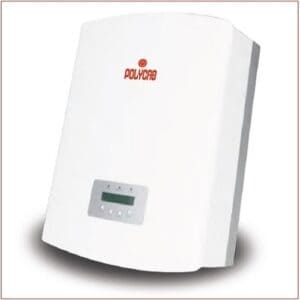
A durable and robust mounting structure is essential to hold the solar panels in place. It needs to be designed to withstand local weather conditions and positioned to maximize sun exposure, typically oriented toward the equator at an angle that optimizes solar gain.
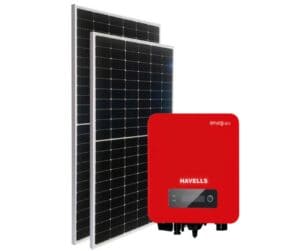
Similar to the DC & AC disconnect switch, this component allows the inverter to be disconnected from the grid when necessary. It ensures that there is no power backflow from the inverter to the grid during repairs or maintenance.
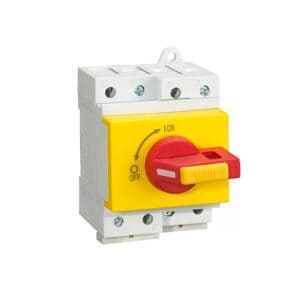
A bi-directional meter that tracks the amount of electricity supplied to the grid and the amount used from the grid. It helps in balancing energy consumption and billing, ensuring that users are only charged for their net energy use.
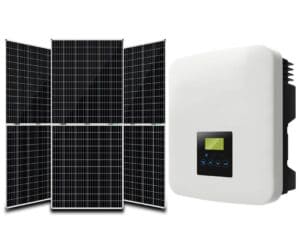
Some systems include a monitoring feature that allows users to track the performance of their solar power system in real time. This can be a beneficial tool to optimize performance and diagnose issues.
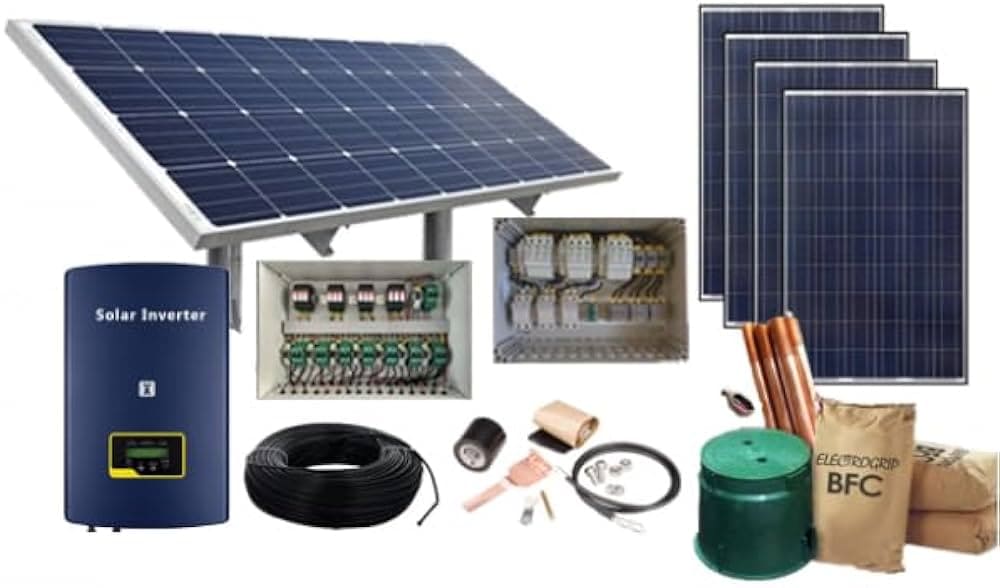
The question now is, when should a 1kW on-grid solar system be installed?
It is the ideal choice for situations where energy consumption remains below 800 watts. This type of solar panel primarily meets the needs of small families or buildings that consume no more than four units per day.
A 1kW On-grid Solar System needs at least 100 square yards of space. As a more cost-effective option than a 1kW off-grid solar system, it serves as an excellent energy-saving asset.
On grid solar panels depend on the utility grid to generate energy. Also, the government provides subsidies between 30 per cent to 70 percent to the user.
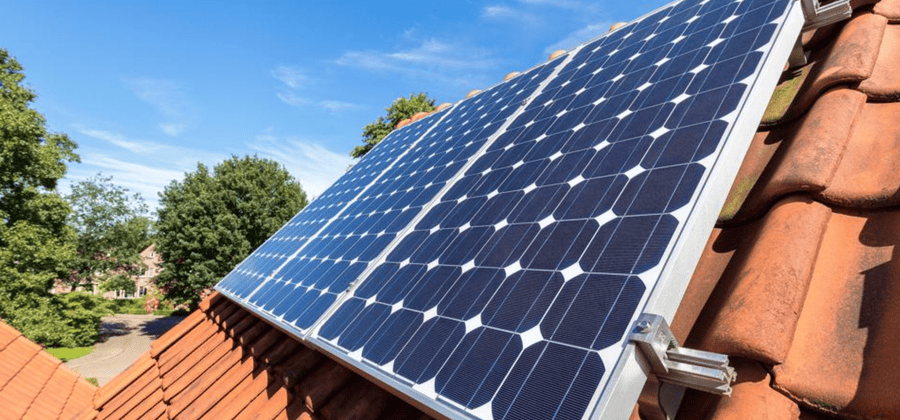
Specifications for a 1kW On-Grid Solar System
| Particulars | Description |
| Solar Power Plant | 1 kW |
| On-grid solar panel in Watts | 540 watt |
| On-grid Solar Panel Qty | 2 nos |
| On-Grid Solar Inverter | 1 kW |
| MC4 Connector | 2 Pair |
| Minimum Space Requirement | 11 to 12 Square yard |
| On-grid solar panel type | Mono or Bifacial or N-type Topcon |
| On-grid solar panel efficiency | 22-23 per cent |
| Inverter efficiency | 97% |
| Warranty | Overall (10 years on-grid inverter) and 27 years for solar panels |
| Energy production per day | 4 units |
| Subsidy on solar panel installation | As per Govt. Instructions |
| Delivery time: | Within 3 days of order |
| Installation time | Within 3 days of delivery |
| Govt. Subsidy: | 30% |
| Type of inverter: | On-grid solar inverter |
| DC Cable | 30 Mtr |
| AC Cable | 20 Mtr |
| Other components | Screw, nut, bolts, Cable zip, crimper, earthing tool etc. |
How much space is required?
A 1 kW solar system typically needs 100 square feet of clear, sunny roof space. However, the exact area required depends on the solar module’s efficiency, the shape of the roof, and local weather conditions.
How much energy produce the 1KW On Grid Solar System?
A 1 kW on-grid solar system can produce 4–6 units of electricity per day, which is enough to power a small to medium-sized home. The amount of energy generated depends on the weather conditions and other factors.
What are the eligibility criteria for subsidies?
To be eligible for the national rooftop solar subsidy scheme, the system must be grid-connected for residential use and use made-in-India solar components. The system must also be installed by an empanelled vendor.
What is the warranty of 1KW On-Grid Solar Solar System?
Solar panels typically come with a 27-year performance warranty, while the inverter and batteries have a 5–10 year product warranty
How do on-grid and off-grid solar systems differ from each other?
On-grid solar systems are equipped with grid-tied setups that eliminate the need for batteries to store energy. In contrast, off-grid solar systems rely on batteries to store surplus solar power.
Which is a better choice an on-grid or off-grid solar power system?
An on-grid solar power system is more advantageous than an off-grid one because it connects to the utility grid. Unlike off-grid systems, it doesn’t need bulky and costly batteries, which are also not environmentally friendly. The concept of net metering enhances its appeal for residential and commercial use by allowing owners to receive credit for any surplus energy they contribute back to the utility grid.
What are the benefits of using solar panels?
Revolutionary solar panels offer an alternative to power your household appliances with energy harnessed from the sun. This presents a hidden benefit for areas prone to power outages, providing not only energy savings but also an environmentally friendly lifestyle choice.
What are the drawbacks of solar power?
Anything that offers benefits also has drawbacks, and this is true for solar power as well. While there’s no denying that solar energy provides an environmentally friendly lifestyle option, it heavily relies on sunlight availability. This dependency can be problematic in areas with limited sunshine or frequent cloudy days.
